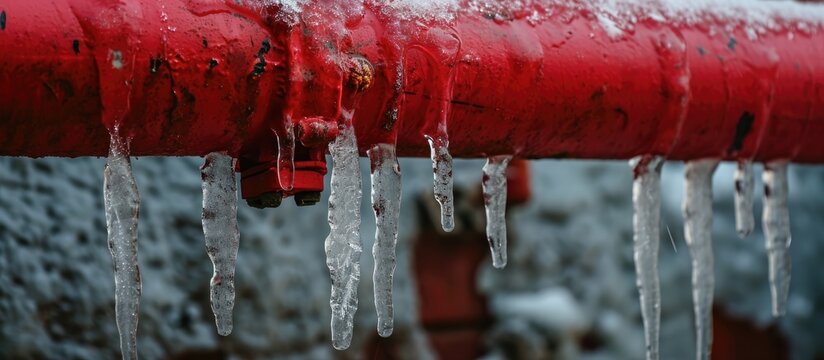Advice for Preventing Frozen Pipes in Cold Weather: Specialist Insights
Advice for Preventing Frozen Pipes in Cold Weather: Specialist Insights
Blog Article
What are your ideas about Winter Plumbing Precautions: Preventing Frozen Pipes?

Winter can wreak havoc on your plumbing, particularly by freezing pipelines. Here's just how to stop it from occurring and what to do if it does.
Introduction
As temperatures drop, the danger of frozen pipelines boosts, possibly resulting in pricey fixings and water damages. Understanding how to avoid icy pipelines is vital for home owners in chilly environments.
Understanding Frozen Pipes
What creates pipelines to ice up?
Pipelines ice up when exposed to temperature levels below 32 ° F (0 ° C) for extended periods. As water inside the pipes ices up, it expands, taxing the pipeline walls and possibly triggering them to break.
Dangers and problems
Frozen pipelines can cause water interruptions, property damage, and costly repair services. Burst pipes can flooding homes and create considerable structural damage.
Indicators of Frozen Pipeline
Recognizing icy pipes early can avoid them from rupturing.
Just how to identify icy pipelines
Seek decreased water circulation from taps, uncommon odors or noises from pipelines, and visible frost on revealed pipes.
Avoidance Tips
Protecting prone pipes
Wrap pipes in insulation sleeves or use heat tape to secure them from freezing temperatures. Focus on pipelines in unheated or exterior areas of the home.
Home heating techniques
Keep interior spaces effectively heated, specifically locations with pipes. Open up cabinet doors to enable warm air to circulate around pipelines under sinks.
Protecting Exterior Plumbing
Yard tubes and outdoor taps
Separate and drain garden hoses before winter months. Set up frost-proof spigots or cover exterior taps with insulated caps.
What to Do If Your Pipes Freeze
Immediate actions to take
If you think frozen pipelines, keep taps open up to alleviate pressure as the ice melts. Use a hairdryer or towels soaked in hot water to thaw pipes slowly.
Long-Term Solutions
Structural changes
Think about rerouting pipelines far from outside wall surfaces or unheated areas. Include extra insulation to attics, cellars, and crawl spaces.
Upgrading insulation
Invest in top quality insulation for pipelines, attics, and wall surfaces. Appropriate insulation aids maintain consistent temperatures and lowers the threat of frozen pipelines.
Final thought
Avoiding icy pipes calls for aggressive steps and fast actions. By understanding the causes, indicators, and preventive measures, home owners can safeguard their pipes throughout winter.
5 Ways to Prevent Frozen Pipes
Drain Outdoor Faucets and Disconnect Hoses
First, close the shut-off valve that controls the flow of water in the pipe to your outdoor faucet. Then, head outside to disconnect and drain your hose and open the outdoor faucet to allow the water to completely drain out of the line. Turn off the faucet when done. Finally, head back to the shut-off valve and drain the remaining water inside the pipe into a bucket or container. Additionally, if you have a home irrigation system, you should consider hiring an expert to clear the system of water each year.
Insulate Pipes
One of the best and most cost-effective methods for preventing frozen water pipes is to wrap your pipes with insulation. This is especially important for areas in your home that aren’t exposed to heat, such as an attic. We suggest using foam sleeves, which can typically be found at your local hardware store.
Keep Heat Running at 65
Your pipes are located inside your walls, and the temperature there is much colder than the rest of the house. To prevent your pipes from freezing, The Insurance Information Institute suggests that you keep your home heated to at least 65 degrees, even when traveling. You may want to invest in smart devices that can keep an eye on the temperature in your home while you’re away.
Leave Water Dripping
Moving water — even a small trickle — can prevent ice from forming inside your pipes. When freezing temps are imminent, start a drip of water from all faucets that serve exposed pipes. Leaving a few faucets running will also help relieve pressure inside the pipes and help prevent a rupture if the water inside freezes.
Open Cupboard Doors
Warm your kitchen and bathroom pipes by opening cupboards and vanities. You should also leave your interior doors ajar to help warm air circulate evenly throughout your home.

I discovered that blog post on How to prepare your home plumbing for winter weather when perusing the internet. Do you know anybody else who is serious about the niche? Please feel free to share it. Thanks a lot for going through it.
Book A Service Call Report this page